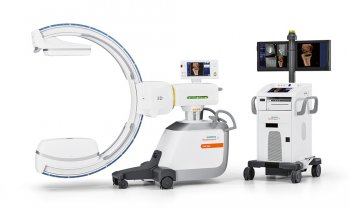Natural orifice translumenal endoscopic surgery
A record 1,700 participants from 84 countries confirmed the dimension and international importance of the European Association of Endoscopic Surgery Congress held recently in Vienna, where Hans-Christian Pruszsinsky caught up with Congress President Professor Selman Uranüs, Head of the Section for Surgical Research, Medical University of Graz, for our interview.

In relation to this year’s scientific programme, which included 312 scientific sessions, 222 free papers in 20 sessions; 118 free videos; 522 posters with three award sessions; 20 grants and five award sessions (Karl Storz, Olympus, Gerhard Buess Technology, EAES video and European Cup), our correspondent first asked Prof. Uranüs for his assessment of the event in terms of surgical practice and which new trends in endoscopy and minimally invasive surgery are emerging. The professor confirmed: ‘Remarkable results were indeed introduced. Fundamentally, we can say that the trend in minimally invasive surgery is heading further in the direction of reduced port surgery. This means a reduction in the number of surgical access points, as well as a further reduction in the diameter of the instruments required, which in some cases are now a mere 3mm or even 2mm. Where until recently the key word for laparoscopic interventions was ‘keyhole surgery,’ we are now talking about ‘pinpricks’, i.e. needlescopic surgery, which does not even require small incisions.
Surely it won’t be possible to reduce the size that much more – so is this as good as it gets?
SU: ‘Not at all – the tendency is towards a single port, i.e. an intervention via just one access point or the utilisation of natural body orifices respectively, which is what surgeons refer to as NOTES – natural orifice translumenal endoscopic surgery. For certain types of operations, such as in gall bladder surgery for instance, these methods are already being used, but it is mainly the hybrid procedures, such as conventional laparoscopy together with NOTES, which are being performed.
Who is driving force these developments –surgeons who would like their work to be more patient-friendly and precise; or increasingly beauty-conscious patients; or manufacturers of endoscopic devices who need to find new markets?
‘We surgeons are essentially the drivers of this development because we are searching for ever more precise and patient-friendly procedures. However, I must note that, in the case of NOTES, we have not yet achieved a real break-through, despite being very optimistic in the beginning – around six to seven years ago. Despite the success mentioned for some surgical interventions the procedure is, to some extent, still in its infancy.
To what do you attribute this?
‘There are a number of factors that are, in parts, mutually dependent. The development of flexible instruments that – after being guided into the operating area, can be made rigid again towards the front – must be advanced. Certain problem areas, such as the danger of infection, lumen enlargements or lighting control, which is also being trialled independently through magnetic movement, must also be considered.
‘However, the biggest stumbling block appears to be the fact that, in direct comparison between needle laparoscopy and NOTES-based procedures, no real quantifiable benefit for the patient can currently be shown. No significant improvements can currently be seen, neither in pain reduction, nor cosmetic advantages, nor shorter hospital stays. The single port procedure with an incision of only 2mm in size near the navel is also confronted with this finding.’
How does a cost comparison look?
‘When it comes to cost efficiency, traditional minimally invasive procedures are presently superior. However, despite this fact, some hospitals push the NOTES, or single port procedure respectively, to attract a certain type of clientele. In principle, the new procedures definitely have advantages for certain interventions, but at the moment they are not dominant enough to cover the entire minimally invasive range of surgery. But development continues and the emergence of further advances will soon also result in patient and cost-relevant improvements.’
What direction could device-related improvements take? Surely nothing can be made much smaller?
‘Miniaturisation and mini-robots that can be inserted into the body, telemetrically controlled and handled and which can carry out surgery. There are small research groups across Europe – among others, here in Graz, and also in the Netherlands – that are working on this exciting topic.
‘A further essential focus at the EAES was on the enormous advances in 3-D technology. Over the last few years there has been a real surge of development, which is particularly beneficial for work in the laparoscopic field. The significantly improved capabilities for the assessment of tissue are easing surgery, the improve precision, lower the error rate and improve treatment outcome. Colleagues who do not yet have much experience with minimally invasive surgery particularly appreciate this helpful technology, and the experienced “sly old foxes” are pleased about the additional benefits of clearly improved images.’
Apropos of better images – do modern imaging procedures have an impact on endoscopy and if so, what?
‘Modern imaging procedures lower the rate of complications and increase treatment outcome, and the error rate falls. Improved early detection and more precise diagnostics are also very important. Collaboration with radiology departments is very cooperative and integration is becoming progressively tighter,’ Prof. Uranüs concluded. ‘Interdisciplinary cooperation serves an efficient workflow as well as the wellbeing of patients.
26.08.2013











